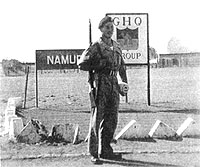
RAMC
As Remembered By John Rowling
(Fayid 1950-52)
Taken off the Orwell in a Z landing craft, I saw for the first time the statue of de Lesseps at the entrance to the Canal. We were taken to 156 Transit Camp at Port Said. Woken up next morning by the tannoy on the Water Tower. After breakfast onto the railway station we boarded the train for Suez. The carriages were very basic, wooden slatted seats and very hot inside, and soon surrounded by vendors selling cola, fruit, salted peanuts and some old News of the World newspapers, plus the usual – “you buy watch Johnnie”
We left the train at El Ballah where 3 Field Ambulance was the
transit camp for RAMC personnel and told I was being posted to No. 33 Coy, British
Medical Hospital, Fayid on 7th June. On arrival I soon met several old mates
who I had been with at the Military Hospital, Colchester. I started
work in the Orderly Room having trained as a Clerk (having been a Bricklayer
in Civvy Street). After 2 days was posted to the Medical Directorate
at GHQ Fayid, just up the road and sent to No. 3 Coy, GHQ Group, Namur Camp.
It was quite a change joining 3 Coy, where all Regts/Corps
were mixed. I moved into a tent with 2 RASC lads and a lad from 14/20th Hussars.
My bed had the old 3 biscuit type mattress, these could be
uncomfortable if the blanket was not kept tight around the biscuits.

Namur Camp
GHQ was about 1½ mile up the road, passing through Fayid Shopping Centre, over the railway and across the Treaty Road. I started work in the Chief Clerks Office, then was sent to Med 3, which was the last Nissen Hut by the perimeter wire overlooking the Big Flea. Med 3 was responsible for all medical equipment, drugs and vaccines. All indents and requests were processed here and were then supplied from the AMED at Ataka, all urgent drugs and vaccines were sent by air through RAF Fayid.
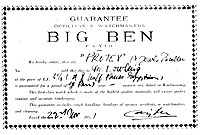
This is a copy of guarantee of Protex watch bought in Fayid Shopping Centre on 22nd Nov ’51 for £6.50. The guy in the shop even signed himself “Big Ben”! I still have the watch but it needs a new spring and packed up in the late 1960's after swimmng whilst wearing it!
Work finished at 13:30hrs. After tiffin, we usually went down to the Lido, where I learnt to swim. With only eight more months of my engagement to run, I thought I am going to like this! But this was all soon to change. Life was very routine, trips to the cinemas in the evenings, the AKC Cameronia, the Globe, weekends sometimes into Ismailia on the Canal Army bus service, which used converted 3 tonners, we had two NAAFIs and we used the Dumbarton House, MMG. Sport was an important part of life and included cricket, football, rugby, GHQ had a good boxing team.
|
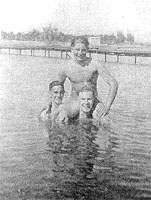 |
Swimming with friends as the Lido
I got my old rank back, Local Acting Unpaid L/Cpl (I had to revert to Pte on leaving 9 Coy at Colchester) I attended lectures in the afternoons, for RAMC trade training at the BMH, and classes at the Education Centre, also Duty Clerk at the Med Branch, and at 3 Coy, and now for guards, RAMC personnel were not allowed to carry arms (Geneva Convention) so we carried a pick shaft.
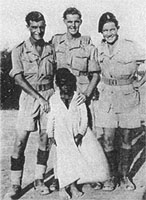
Pat Smith, Tony Gately & Self with Abdul
I was promoted to Cpl, more duties now, acting Ord Sgt, Cookhouse NCO, Guard Commander, Canteen NCO, duty clerk at both Med Branch and 3 Coy.
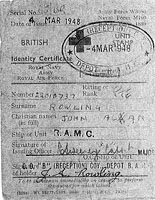
My Identity Certificate
I met an old school mate, Arthur Rawlinson, a Cpl in 512 Coy RMP. He was escort to the C in C, and I spent quite a bit of time down at the C in Cs Compound on the Canal Road. Changes took place in the Medical Directorate, I had two new lads in my section, the typing pool increased and more civilian clerks taken on – some Greek, Lebanese and Egyptian. Maj-Gen Menzies headed the Directorate and the DDMS was Col Johnston, who was the first medical officer to enter the Blesen concentration camp at the end of War II. Many important people visited GHQ, I saw the C in C of the British trained Arab Legion, General Sir Glubb Pasha..
January 3rd 1951 should have been my release date, but owing to the Korean war, release had been stopped and I was told to soldier on. I was now eligible for leave and this was granted in March to the Seaview Holiday Camp at Port Said. In June I was promoted to A/Sgt and moved into 3 Sgts Mess. Life was now changing, tea was brought to the tent each morning, no more beds making - we had an Egyptian lad who did this for us for a few ackers a week. Life was very much routine, I was getting more duties, attending more Education classes to sit for more exams. We were still allowed to visit Ismailia in civilian clothes. Tension was beginning to build up, the Egyptians had torn up the Treaty and more troops were coming to the Zone, including 16th Ind. Para Bde. and married families were moving from Ismailia We paraded in the Olympia Stadium for Remembrance Day, the band of the Royal Sussex Regt played for the Service.
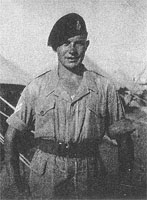
Self, browned off when release was deferred
We were getting some very bad dust storms now, they lasted for
about three days, dust got everywhere, and on the 15th Dec I saw my first rain
since arriving in the Zone. Christmas arrived and I helped take the early morning
tea round to the lads, and waited on at the dining room tables for Xmas dinner.
I was Ord Sgt as well for the day, after mounting the guard, and closing the
NAAFI, that was Christmas Day. We had our Christmas dinner in the Mess on Boxing
Day. In the afternoon we went down to the Old Vic Lido Sports Ground where the
football match was between the RAF –v- Army.
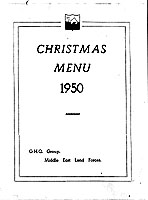 |
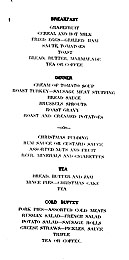 |
January ‘52 saw the troubles increasing, we were only allowed out in pairs, and had to carry rifles. This created a problem as all RAMC personnel after 1948 had not received arms training. We therefore had to parade after work for arms drill and weapon training from the Ord Sgt of the day.
Following the death of the King, a drumhead service was held in the Olympia Stadium on the 15th Feb. Routine was very much the same, I sometimes went on escort duty with Officers to Suez or Ataka. 591 Car Coy RASC (later 58 Car Coy) provided the staff cars and lorries for GHQ, mainly Humbers and Vanguards.
A lot of families had gone back to Blighty or moved down to Kensington Village because of the troubles, and the Egyptian labour force had been withdrawn. There were some shortages, mainly vegetables, and beer was coming from Blighty, a nice change. We had our own news sheet, The Canal Zone News, published 3 times a week, printed at GHQ Printing Press. The Forces Broadcasting Service at Fayid also served us.
On 4th April I was told I was being released shortly (this was 1 year 4 months after my release date). I had a few drinks with my mates down at the WO's & Sgt Club on Saturday 12th and left Fayid on the 18th, travelling in a trailer towed by a Scammel to Port Said. We embarked on the HT Lancashire. Complete my release documentation, including medical on the 29th April 1952 and then on to Inkerman Barracks, Woking to collect the de-mob suit and the blue trilby!
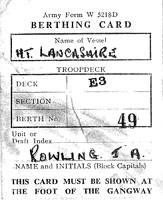 |
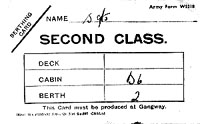 |
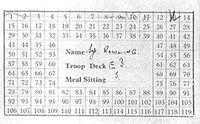 |